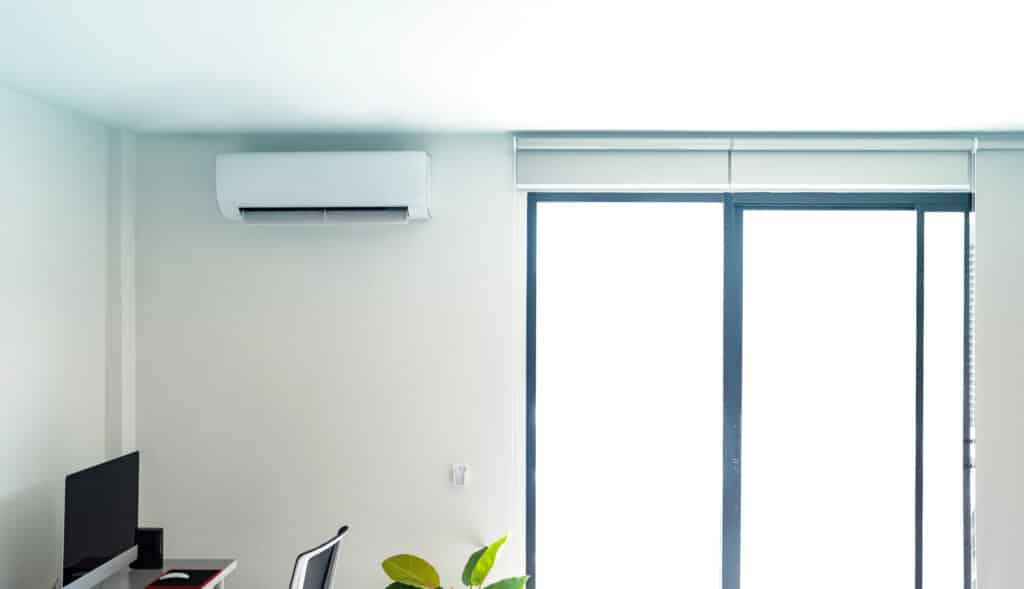
As cities grow and urban areas become more densely populated, the issue of indoor heat islands has become increasingly significant. Heat islands refer to areas where temperature is higher than the surrounding environment, typically caused by the accumulation of heat in buildings, roads, and other man-made surfaces.
By optimizing ventilation, energy consumption can be reduced, comfort can be enhanced, and the building’s overall sustainability can be improved.
Understanding Indoor Heat Islands

Indoor heat islands are a result of several factors that trap heat inside a building. These can include poor insulation, ineffective air circulation, the materials used in construction, and heat generated by appliances, electronics, and even lighting. Buildings that are not designed with sufficient airflow or ventilation can trap this heat, leading to discomfort for occupants and higher energy costs for cooling systems.
Heat islands inside buildings are often exacerbated during warmer months when external temperatures rise, but they can also be a concern during the winter if heating systems are inefficient or poorly distributed.
Effective Ventilation Systems for Reducing Indoor Heat Islands

One of the most effective ways to reduce indoor heat islands is by ensuring proper ventilation throughout the building. Effective ventilation involves creating an airflow pattern that moves hot air out and introduces cooler air from outside. The simplest approach might be to open windows, but this is not always practical or efficient, especially in urban environments with high levels of outdoor pollution or extreme temperatures. For this reason, many buildings rely on mechanical ventilation systems, such as exhaust fans and air handling units, to manage indoor air quality and temperature.
So when you’re looking for the best exhaust fan to remove heat from an area, it’s essential to choose one that suits the size and specific needs of the space. Exhaust fans are designed to expel hot air and replace it with cooler air, thus preventing heat from accumulating.
These fans can be installed in various parts of the building, such as attics, kitchens, or bathrooms, to help regulate the temperature and humidity levels. When selecting an exhaust fan, consider factors such as the fan’s airflow capacity, noise levels, and energy efficiency to ensure it provides optimal performance without unnecessary energy consumption.
Natural Ventilation: A Sustainable Approach
While mechanical ventilation systems are highly effective, natural ventilation should also be a key consideration in reducing indoor heat islands. Natural ventilation relies on the flow of air through windows, vents, and other openings in the building’s structure. When designed correctly, natural ventilation can help to significantly reduce reliance on air conditioning and exhaust fans, making it a more sustainable and cost-effective solution.
Designing for natural ventilation involves considering factors like building orientation, window placement, and the surrounding environment. For example, cross-ventilation—where windows or vents on opposite sides of a room or building are opened to allow air to flow through—can be a highly effective way to promote airflow and reduce heat buildup.

Additionally, the use of shading devices such as overhangs or awnings can help keep windows cooler, making the space more comfortable and further reducing the need for mechanical cooling.
Natural ventilation is also beneficial for improving indoor air quality. By allowing fresh air to enter the building and expelling stale air, it helps to dilute indoor pollutants and ensure a healthier living environment.
However, it is important to note that natural ventilation may not always be sufficient in highly urbanized or densely populated areas, where air quality can be a concern. In these cases, a combination of natural and mechanical ventilation may be necessary to achieve the desired results.
Insulation and Heat Control
Along with ventilation, proper insulation plays a significant role in reducing indoor heat islands. Insulation helps to prevent heat from entering or escaping a building, maintaining a more stable indoor temperature.
When combined with effective ventilation, insulation ensures that the building remains cooler in the summer and warmer in the winter, which is especially important for reducing reliance on air conditioning or heating systems.
Proper insulation can be achieved through the use of materials such as fiberglass, foam, or cellulose, all of which provide a barrier to heat flow. Insulating walls, roofs, and floors, as well as sealing gaps and cracks, can reduce the amount of heat entering the building, thus making it easier to maintain a comfortable indoor temperature.
Additionally, reflective or cool roofing materials can be used to prevent excessive heat from accumulating on the roof, further reducing indoor temperatures.
Green Roofs and Living Walls

Another innovative approach to reducing indoor heat islands is the installation of green roofs and living walls. These systems involve the integration of plants into the building’s structure, which helps to absorb heat and provide insulation.
Green roofs, for example, are covered with vegetation that absorbs sunlight and reduces heat buildup on the building’s surface. This not only helps to lower indoor temperatures but also contributes to improved air quality and reduced carbon emissions.
Living walls, or vertical gardens, function similarly by utilizing plants to absorb heat and regulate temperature. These green systems not only reduce the heat island effect but also enhance the aesthetic value of the building and provide additional benefits, such as improved noise insulation and increased biodiversity in urban areas.
Smart Building Technologies

Advancements in smart building technologies have made it easier than ever to control ventilation and temperature within a building. Automated systems, sensors, and smart thermostats allow for precise control of airflow and temperature based on the current conditions within the space.
For example, sensors can detect when a room becomes too hot and activate exhaust fans or open windows to allow for cooler air to enter. Additionally, smart thermostats can adjust the temperature settings to ensure optimal comfort while minimizing energy consumption.
These smart technologies can also be integrated with other building systems, such as lighting and shading, to create a more holistic approach to temperature regulation. For example, automatic blinds can be deployed when the sun’s heat becomes too intense while the HVAC system adjusts to maintain a comfortable temperature. This level of automation ensures that the building remains energy-efficient while effectively reducing indoor heat islands.
Indoor heat islands pose a significant challenge to building comfort, energy efficiency, and health. By incorporating smarter ventilation planning, including mechanical and natural ventilation strategies, alongside insulation and green technologies, it is possible to significantly reduce the buildup of heat inside buildings.
With the integration of smart technologies, buildings can maintain optimal comfort levels while minimizing energy consumption and promoting sustainability.
- 1share
- Facebook0
- Pinterest1
- Twitter0



